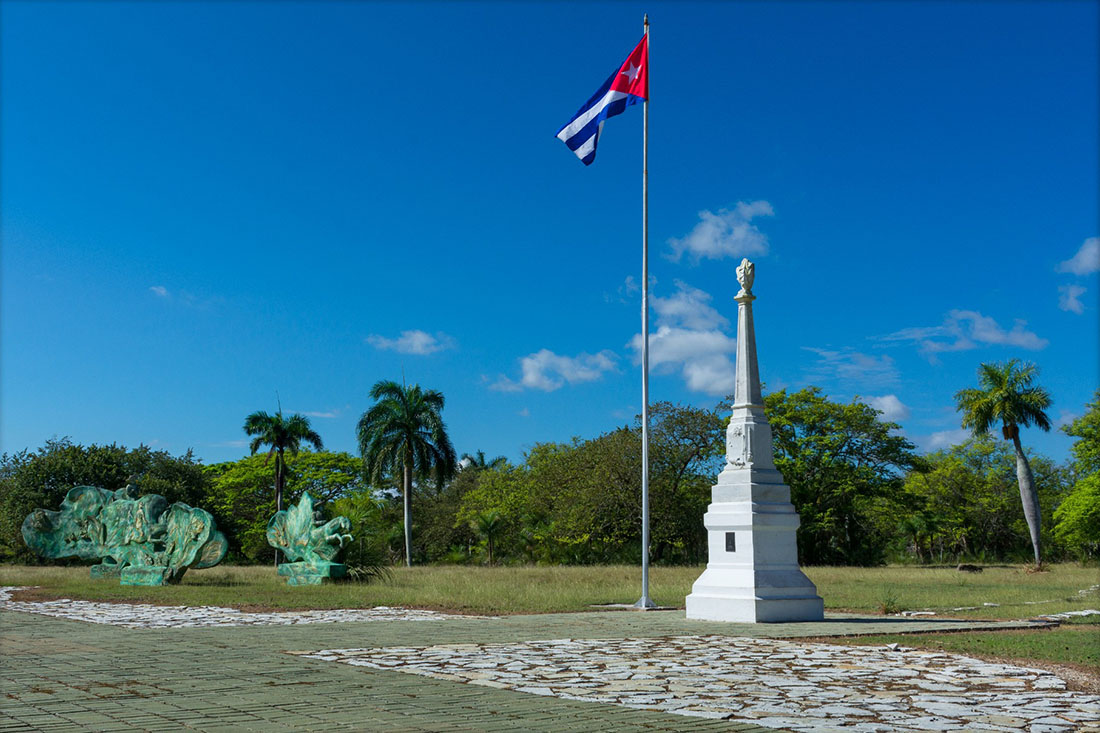On May 11th, 1928, it was inaugurated in Jimaguayú an obelisk, that mark the place where El Mayor Ignacio Agramonte fell in combat. The inauguration ceremony carried out was the result of the initiative of the Territorial Council of Veterans of Independence, chaired at that time by Lieutenant Colonel Luis Suárez. It was carried out in the presence of part of the people of Camagüey, local residents and some veterans such as: Elpidio Mola, Emilio Luaces, Pedro Betancourt, Eugenio Sánchez Agramonte, Carlos Agüero, Javier de la Vega, among others.
As Joaquín Estrada-Montalván reflects in his research, it had a central ceremony: the Holy Open-air Mass, at the request of the veterans themselves and with the approval of the Bishop of Camagüey, Msgr. Enrique Pérez Serantes, and directed by Fr. Manuel R. Mendiola Roura. Once finished, Mrs. María Socarrás de Pons, Emilio Luaces and the child Alfredo Morell spoke. Later, while the Military Band interpreted the notes of the National Anthem, the monument was unveiled. After the ceremony, Emilio Luaces delivered the obelisk to the Municipal Mayor.
Beyond a ceremony
The ceremony celebrated would have a great symbolic meaning for those present, due to the need to explain an event of great importance and transcendence for regional and national history. In this way, it would be a first attempt to perpetuate a place of historical-symbolic values.
This is how a people converted into a social actor, a participant, is observed; a people committed to their activism for the sake of visualizing, rescuing, reaffirming their relationship with history, especially focused on immortalizing one of the most important figures of the Ten Years’ War.
Honoring the hero
These events were captures in different articles and chronicles published by the El Camagüeyano newspaper, between May 10th and 12th of that year.
Likewise, it cannot be said that it was an isolated event, because years before, attempts had been made to honor the figure of Agramonte in different activities, and an important collection of objects related to said personality and his wife Amalia Simoni could even be created.
Conclusions
This first attempt to signify a historical fact of great magnitude would be dignified and magnified with the work carried out by the Office of the Historian of Camagüey city, years later, giving added value to the place.
Bibliography
Estrada–Montalván, Joaquín. Recordando a El Mayor. Crónica de la inauguración de su obelisco. 11 de mayo del 2017.
Garciá López, Angélica. “Patrimonio Cultural: Diferentes perspectivas”. Arqueoweb. Revista sobre Arquelología en Internet 9(2), 2008.
García Santana, María Mercedes. Coleccionismo y museos en Cuba (siglo XVI-primera mitad del XX. Editorial UH, La Habana, 2017.
Translated by: Aileen Álvarez García






